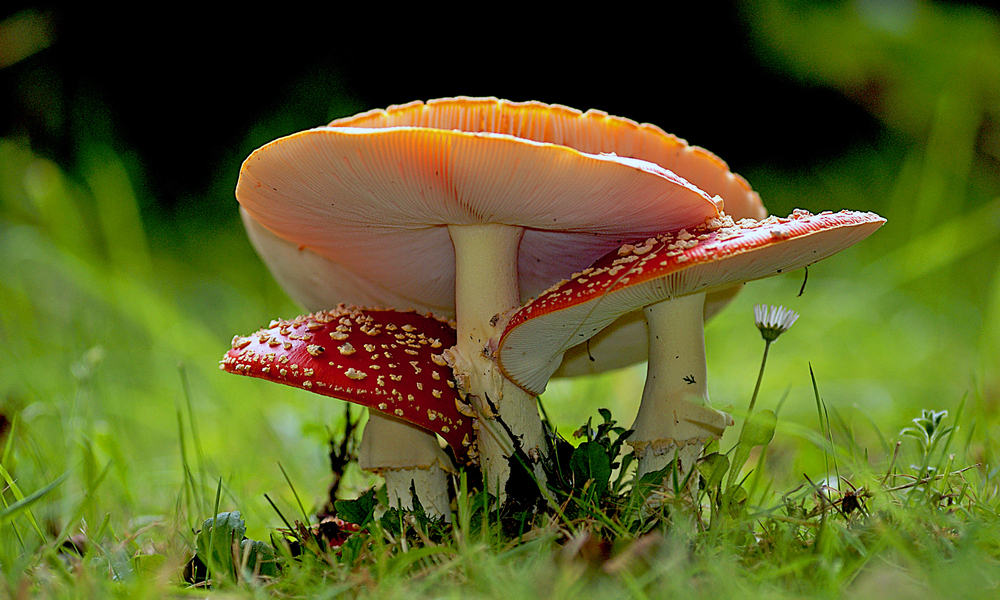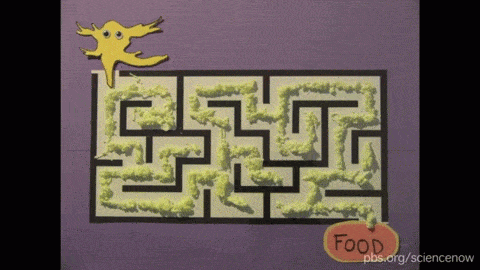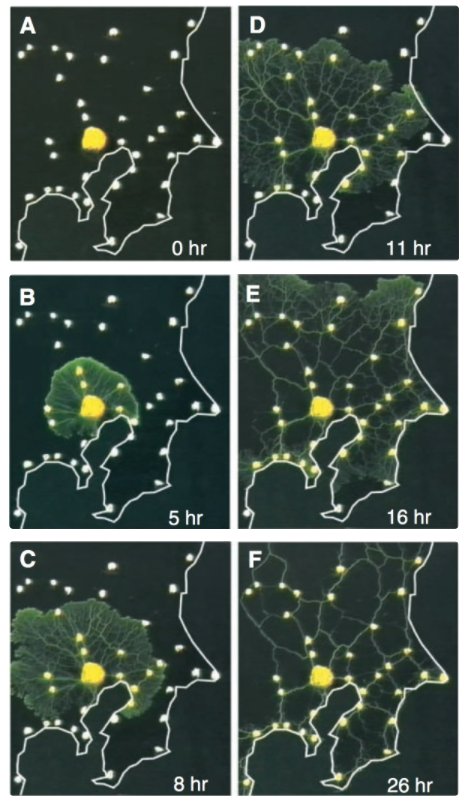Why and how to use mushrooms?
To begin with, it is worth mentioning that mushrooms, first of all, are the kingdom of living nature,
Everything from champignons to mold on the ceiling are mushrooms.
Joint research with the participation of the UniversityWest England (UWE Bristol), Mogu Srl, the Italian Institute of Technology (IIT) and the Universitat Oberta de Catalunya (UOC) have all demonstrated that mushrooms have incredible properties. They allow them to perceive and process external stimuli such as light, stretching, temperature, the presence of chemicals, and even electrical signals.
Scientists are confident that this will pave the way for the emergencenew fungal materials with many interesting characteristics, including stability, durability, repairability and adaptability. By exploring the potential of fungi as components of wearable devices, the study confirmed the potential of these biomaterials to be used as effective sensors with an endless number of possible applications. Let us remind you that wearable devices are a kind of miniature computers: bracelets, glasses, watches and even items of clothing - with wireless local or remote connection to other computers. Typically, such devices are equipped with sensors that monitor various forms of physical activity or environmental parameters in which the user is located.
Mushrooms make smart wearables even smarter
People are unlikely to find fungi as a suitable material.for the production of gadgets, especially smart devices such as pedometers or mobile phones. Wearable devices require complex circuits that connect to sensors and have at least some processing power. This is achieved through sophisticated procedures and special materials. Roughly speaking, they are what make them "smart". The collaboration of Prof. Andrew Adatzki and Dr.Anna Nicolaidou of UWE, Anthony Gandia, CTO of Mogu Srl, Prof. Alessandro Ciolerio of IIT and Ph.D. Mohammad Mahdi Dehshibi, researcher at UOC, has demonstrated that mushrooms can be added to the list of these materials.
What are mushrooms capable of?
In fact, a recent study, “Reactive fungal wearable,” presented in the journal Biosystems, the ability of oyster mushrooms to sense externalirritants that can come from, for example, the human body. To test the fungus' ability to respond as a biomaterial, the study analyzes and describes its role as a biosensor capable of distinguishing between chemical, mechanical and electrical stimuli.

“Mushrooms make up the largest, most widelythe most widespread and oldest group of living organisms on the planet, ”explains Dr. Dehshibi, adding:“ They grow very quickly and bind to the substrate. ” Mushrooms are even capable of processing information the way computers do, according to a researcher at UOC.
Mushroom programming
The scientist is sure that mushrooms can even be“program”—namely, their geometry and theoretical-graphical structure of mycelium networks. The electrical activity of the mushrooms can then be used to implement computational circuits. Sounds unrealistic? Let's look at what mycelium is.
The mycelium is the vegetative bodyfungus, which has the ability to change its structure, while forming special organs that ensure reliable attachment to the substrate, nutrition and subsequent reproduction. In fact, mycelium is nothing more than the mycelium familiar to everyone. This is where the mushroom actually begins to grow, so taking, for example, the mycelium of a porcini mushroom or an oil can, you can very successfully grow them in any place suitable for this purpose. And by changing its structure at the very origins, you can change the “behavior of the mushroom.”
By the way, mushrooms not only respond to stimuli andsignals are triggered accordingly. Their structure allows scientists to manipulate them to perform computational tasks, in other words, to process information. As a result, the ability to create real computer components from fungal material is no longer science fiction. In fact, the components of fungi will be able to pick up and respond to external signals like never before.
Why use mushrooms?
At first glance it may seem thatusing fungi is a bad idea. They need to be looked after, they decompose, have little stability, can emit odors, and so on. However, most of these problems have already been solved! As scientists note, working with living organisms “is generally associated with certain difficulties.” With this in mind and after analyzing all the options, the team ultimately chose basidiomycetes, a division of the fungal kingdom, for their study.
A type of mushroom unlike other - Basidiomycetes
Today science knows 36 classes of mushrooms,united into four divisions - superior, imperfect, inferior and mushroom-like. Basidiomycetes (lat. Basidiomycetes) or basidiomycetes are one of the main classes of higher fungi. They differ from others in their diet and biology. They have well-developed hyphae with septa, their cells contain two nuclei, and a characteristic feature of basidiomycetes is the formation of basidia in the hymenophore. These are special sporulation organs, consisting of a swollen terminal cell with two or four spores. On them, exogenously, that is, under the influence of an external cause, immobile basidiospores (spores of sexual reproduction) are born.
 Mycelium
Mycelium
These mushrooms are less associated with disease and otherproblems caused by their relatives when growing indoors. Moreover, mycelium-based products are already being used commercially in construction. These mushrooms can be shaped in different ways. This construction is similar to the construction of cement, but it will take only five days to two weeks to create the geometric space. In addition, mushrooms do not harm the environment as much as the production of cement. In fact, given that they feed on waste to grow, they can be considered environmentally friendly.
 A close-up image of the mushroom Amanita muscaria, commonly known as the fly agaric, is a basidiomycete fungus.
A close-up image of the mushroom Amanita muscaria, commonly known as the fly agaric, is a basidiomycete fungus.
"Mushroom architecture"
"Mushroom architecture" itself is not anew. Existing strategies in this area include growing an organism to the desired shape using small modules such as bricks, blocks, or sheets. They are then dried to kill the body, leaving the stable compound odorless.
But, according to the expert, in this direction it is possibletake it one step further by preserving the mycelium and integrating it into nanoparticles and polymers to develop electronic components. The computer substrate is grown in textile form to give it additional structure. Over the past decade, Professor Adamatzki has created several prototypes of sensory and computing devices using the slime form of the Physarum polycephalum, including various computational geometry processors and hybrid electronic devices.
The genius of the mold Physarum Polycephalum
At first glance, Physarum polycephalum is notis of particular interest. Growing mainly on decomposition products in forests, this bright yellow mold is clearly not suggestive. Even less impressive is the structural structure of the organism: it is single-celled, has only a residual amount of DNA, proteins and enzymes, moreover, it grows at an insignificant rate - only 1 millimeter per hour.
However, despite all the listed disadvantages,this plasmodial slug mold is remarkably intelligent. Overcoming artificial labyrinths, recreating complex, human-designed trajectories, while avoiding the tendency to repetition, this organism focused on itself the attention of many scientists around the world back in the early 2000s.
 Fruiting bodies of mucous mold or myxomycete Physarum polycephalum look like multi-headed fungi
Fruiting bodies of mucous mold or myxomycete Physarum polycephalum look like multi-headed fungi
Solving the problem in the shortest way
In 2001, a team of researchers from Hokkaido University (Japan) was formed in order to study the ability of this organism to make paths through mazes.
The mold sample was split into severalfragments and then evenly placed in the maze field. Within a few hours, the mold had grown, tying together all the scattered fragments and filling almost every possible path. And when the researchers placed small pieces of oatmeal at the entrance and exit of the maze, something amazing happened.

Slowly but surely, the mucus crawled out of everyonedead end of the maze, and concentrated on the most efficient trajectory leading to food. "Separate thick vein-like forms", as the researchers wrote, "connecting two points with a trajectory as close as possible to the shortest path."
As a result of the experiment, the scientists decided that this organism possesses some kind of rudimentary semblance of mind.
Ability to learn and change behavior
Physarum polycephalum studied at the UniversityHokkaido and seven years later. Then they conducted another study aimed at studying the ability of the slug organism to predict and remember events, despite the absence of a brain.
As part of the experiment, a mold sample was placedon a sheet of plastic, after which it was allowed to grow in specially created ideal conditions (high temperature, humidity). Then, at regular intervals, the sample was suddenly exposed to cold and dry air, during which the mold greatly slowed down the growth rate.
 A yellow slimy mold, Physarum polycephalum, grows over a fallen log.
A yellow slimy mold, Physarum polycephalum, grows over a fallen log.
Then something unexpected happened:after several intervals, the slug mold began to "predict" the moment at which it would be exposed to the cold air, and slowed down its growth in advance in order to save energy.
As a result, the researchers found that the studied organism has the ability to learn, despite the complete absence of any semblance of a brain.
Networking ability
In 2010, Japanese scientists began to study Physarum polycephalum again - this time they wanted to find out whether this organism is capable of forming effective networks.
They recreated a miniature version of the circuitTokyo Railways using oatmeal to mark the locations of cities and a sample of a slug organism on a piece of oat representing Tokyo. It is worth noting that the construction of a real railway network was due to the peculiarities of the natural relief (mountains, rivers, etc.). These obstacles were meticulously recreated using separate light sources of different intensities. The fact is that plasmodia avoid bright lighting.
 The Great Yellow Spot represents Tokyo and thatthe point where the Physarum specimen was originally placed; from here, the slimy mold spread to small white dots (representing the main nearby cities), and thinned further only to the main connections between them. This process took the body only 26 hours.
The Great Yellow Spot represents Tokyo and thatthe point where the Physarum specimen was originally placed; from here, the slimy mold spread to small white dots (representing the main nearby cities), and thinned further only to the main connections between them. This process took the body only 26 hours.
After numerous tests, the researchersconcluded that the mold "showed characteristics similar to the characteristics of the rail network in terms of cost, transport efficiency and resiliency," and it achieved this by creating a "process to selectively enhance preferred routes while removing redundant links."
Using the findings, the team developed a biologically inspired mathematical model for adaptive network design.
“What took people more than 100 years is difficultthe system being developed by engineers and urban planners was recreated by mold in a little over a day, ”biologist Heather Barnett said at a TED conference on these organisms. "Myxomycetes - an analogue of a biological computer."
Work ahead and challenges
Despite the fact that this slimy moldmany advantages, the fact that it is constantly changing, does not allow creating long-lived devices from it; as a result, the computational capabilities of mucous mold are limited to experimental laboratory facilities.
However, according to Dehshibi, basidiomycetesdue to their development and behavior, they are more accessible, less susceptible to infections, larger in size and more convenient to handle than mucous mold. In addition, Pleurotus ostreatus can be easily experimented with outdoors, opening the door to new applications. This makes mushrooms an ideal target for future living computing devices.
Problems of using mushrooms
A UOC researcher stated:“In my opinion, we still have two main problems to solve. The first is to actually implement the computation [of the fungal system] for a specific purpose; in other words, a computation that makes sense. The second is to characterize the properties of mushroom substrates using logical mappings to uncover the true computational potential of mycelium networks. ” In other words, while we know mushrooms have potential, scientists still need to figure out how far it goes and how it can be used for practical purposes.
However, the wait may not be long.The initial prototype, developed by a team of scientists, which is part of the study, will simplify the future design and construction of buildings with unique capabilities thanks to fungal biomaterials. This innovative approach promotes the use of a living organism as a building material that is also adapted for computation. When the project to research mushrooms as materials for wearable devices is completed in December 2022, the FUNGAR project will build a large mushroom building in Denmark and Italy, as well as a smaller version on the UWE Bristol Frenchai campus.
 Prototype FUNGAR.
Prototype FUNGAR.
To date, onlysmall modules - bricks and sheets. However, NASA is also interested in the idea and is looking for ways to build bases on the Moon and Mars to send inactive disputes to other planets.
What's the bottom line?
“Life inside a mushroom may seem to youstrange, but why is it so strange to think that we can live inside something alive? This would represent a very interesting ecological shift that would enable us to do away with concrete, glass and wood. Imagine schools, offices and hospitals constantly growing and rebuilding. This is the pinnacle of sustainable life. "
According to the authors of the article, the purpose of fungalcomputers are not replacements for silicon chips. Fungal reactions are too slow for this. Rather, they think humans can use mycelium growing in an ecosystem as a "large-scale environmental sensor." In their opinion, fungal networks track a large number of data streams as part of their daily existence. If we could connect to mycelium networks and interpret the signals they use to process information, we could learn more about what's going on in the ecosystem.
Read more
Abortion and science: what will happen to the children who will give birth
Scientists develop a new type of optical quantum computer
Named a plant that is not afraid of climate change. It feeds a billion people
Domain (super-kingdom) of living organisms, whose cells contain a nucleus. All organisms, except for prokaryotes (bacteria and archaea), are nuclear.
innovative design company
Oyster mushroom, Oyster mushroom, or Oyster mushroom (lat.Pleurotus ostreatus)
mushroom threads
spore-bearing layer